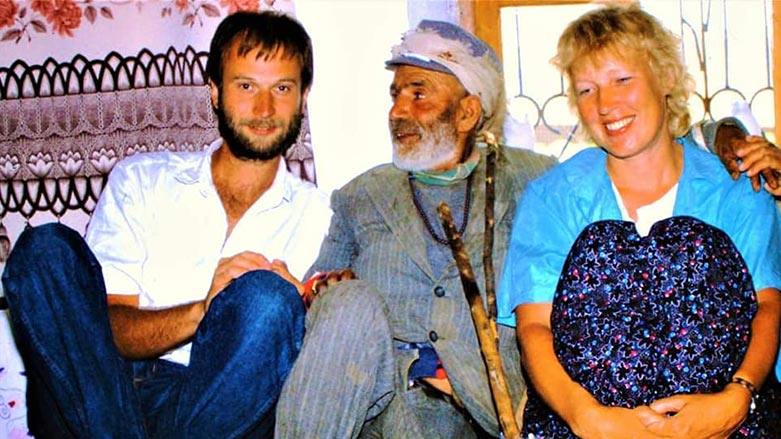The story of Danish tourists who made documentary about Kurdish villages in Konya

ERBIL (Kurdistan 24) – In the mid-1980s, Kurdish villages in Turkey’s Konya province attracted several Danish researchers and documentarians.
They visited the Kurdish areas after tracing a number of migrants’ places of origin. They aimed to tell the stories of migrants who had experienced two different cultures.

Kurdistan 24 reached out to these researchers.
Jimmy Andreasen and Iben Niegaard, two Danish documentarians and travelers, visited the Konya villages in 1985 and filmed their journey and published it as a documentary entitled “Child Between Two Worlds.”

“There was a Kurdish family from Turkey who migrated from the village of Kırkpınar (Kulu) to the town of Holstebro in the province of Jutland, Denmark,” the two said of their experience to Kurdistan 24.
“In our study, we were interested in the daily life of this family. We [filmed] the children who went to their village with their families during the summer vacation.”

Andreasen and Niegaard said they were trying to understand how children who migrated to Europe with their families developed between the two cultures.
According to them, children living in Denmark manage to maintain both cultures in their lives by not straying far from their own culture and assimilating to that of Denmark.
Danish researcher and photographer Niels E. Pedersen also visited the villages in Konya with his wife in 1986 and took pictures highlighting Kurdish culture.

A resident of the Danish capital of Copenhagen’s Avedøre suburbs, Pedersen met many Kurds in the area and summarized the purpose of his visit to Konya as follows:
“My wife trained as a social anthropologist and then became a teacher. She wanted to go to Turkey and see where the families of the children lived and what kind of life they led,” he said.
“Combined with the desire to do [film] for children coming to Denmark from a Kurdish village in Turkey, I thought it was a good idea for me too.”

Pedersen explained: “For example, while young girls were usually waiting for the water at the fountain at that time, I think there is tap water in every house now.”
“The layout of the living rooms at that time was very interesting to us. When family members or friends came home, the younger ones would stand up to pay their respects,” he noted.
Report by Adem Özgür
